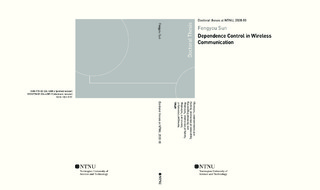| dc.description.abstract | In the physical world, the system components or the system states are probabilistically related to each other spatially and temporally. This kind of relation is termed stochastic dependence or dependence, which is described in mathematics by the probability measures of the dependent elements. We regard the dependence as a physical reality as well as a mathematical property and propose to control the dependence for the system performance improvement. We build a theory of dependence control and pply the theory to the wireless communication system. Specically, we prove that the wireless channel capacity is intrinsically light-tailed due to the passive nature of the wireless channel and the power limitation, the dependence of the stochastic process is transformable due to the existence of both uncontrollable and controllable random parameters, and dependence in the arrival process and service process of a queueing system are measurable and have a dual potency to in uence the queueing system performance. Particularly, we summarize the dependence measures of the queueing system, the dual potency of the arrival and service processes, and the dependence transformability of the stochastic process as the three principles of the dependence control theory, i.e., the measurability, duality, and transformability. | nb_NO |
